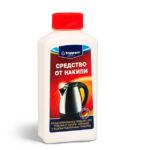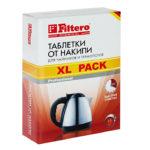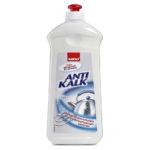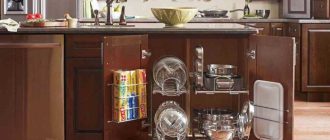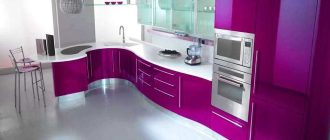The limescale formed during boiling is not as harmless as it seems. It increases the time of water heating, worsens the taste of the drink, and an electric kettle can lead to breakage. We will tell you how to remove limescale in the kettle without buying professional household chemicals and cleaners.
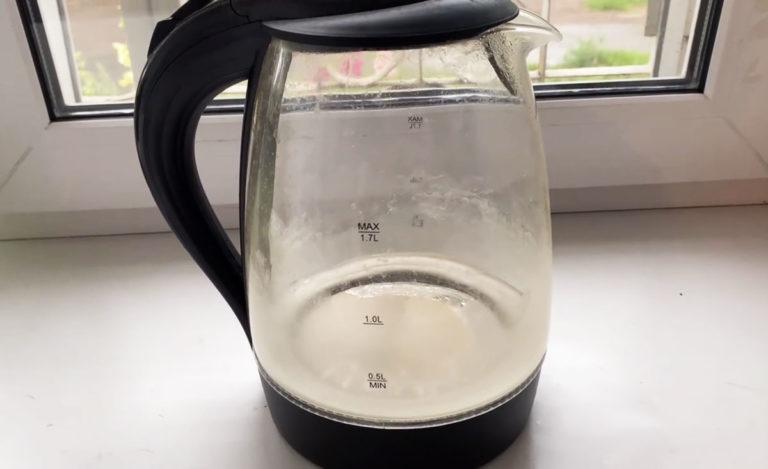
Съдържание на статията
Where limescale comes from
Limescale is an indicator of water that is too hard. All water – tap water, well water or water from a well – contains potassium and magnesium salts. The amount of Ca and Mg compounds per volume, determines the quality of water. If the content of these elements in the water is elevated, we notice the appearance of sediment inside the dishes after boiling.
The appearance of sediment is due to the presence of non-permanent or carbonate hardness in the water. The formula of these substances looks like this:
Ca(HCO3)2 and Mg(HCO3)2
Scaling occurs at temperatures of 40 °C and above. This results in a whitish or yellowish scale that settles on the walls of the kettle or floats in the water.
Usually the scale forms if you use bad tap water rather than drinking water. However, if you use bottled water, scale can also appear. Make sure that it is drinking water and not mineral water. The same problems will occur if you often boil carbonated water.
Limescale is especially harmful to electric kettles. Lime deposits on the heating element impair heat transfer, as a result, the water takes longer to heat up. When the thickness of the layer increases, overheating and failure of the heating element occurs.
How often you need to remove deposits
The kettle should be cleaned from plaque once every 3-4 months – after about 300 boilings. If you use tap water or mineral water, clean the dishes more often – once a month.
In general, act according to circumstances. If you see that the kettle inside is covered with a thick plaque, clean it. It is much more difficult to remove a thick, stale layer of scale, which has already stuck to the walls.
You should not fanatically get rid of the scale after every boiling, but it is also not recommended to start the situation by “growing” a thick layer of scale on the walls.

Harm to humans
Whitish scale is not only an aesthetic problem. Not only is it not particularly pleasant to drink from a kettle covered with something white, but water with micro-particles of scale can be harmful to humans.
In moderate amounts, potassium and magnesium salts are necessary and useful for humans. Water is the main supplier of these trace elements to the body.
Another thing, if you have to drink water for a long time, in which the content of potassium and magnesium salts exceeds the norm. Getting into the human body with boiled water, they accumulate and cause problems with the kidneys, joints.
Overabundance of minerals is as dangerous for the body as their lack.
If you notice a rapid build-up of scale, check the water hardness level with test strips or a device. If the water hardness is high, take measures to soften it by using appropriate filters.
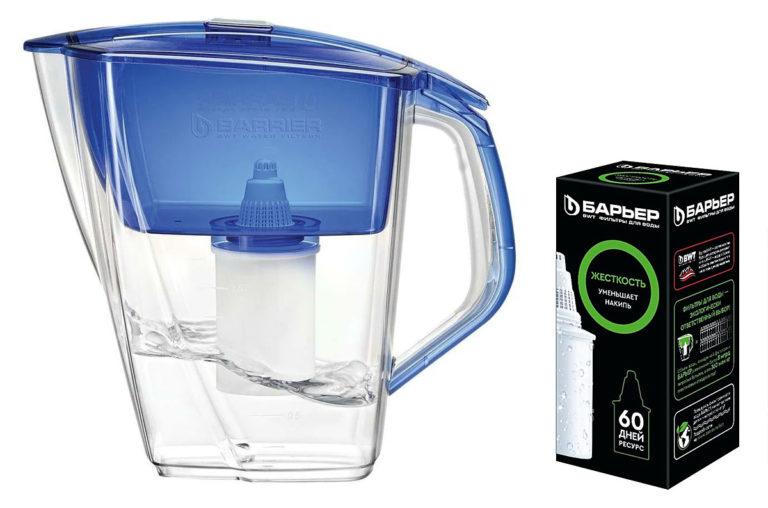
Is it possible to descale an electric kettle?
Almost all the methods that are presented in the article will help to remove limescale in an electric kettle. However, during the cleaning process, take precautions. Do not rub the walls too hard, carefully remove the scale on the heating element.
There is a perception that acid cannot be used to clean glass kettles – this is not true. Acid does not react with plastic, glass or glue, but it will corrode iron. Frequent use of strong acid solutions to clean deposits may cause the kettle to leak or break.
The specifics of removal depend on the material of the electric kettle:
- when removing scale, use a weak acid solution;
- plastic is afraid of any coloring agents, as the dye can be absorbed into the body and leave unsightly streaks;
- aluminum, copper, brass – use gentle agents and avoid concentrated acid mixtures;
- glass and metal – do not use metal brushes to avoid scratching the case.
After treating the kettle, rinse it with water and let it dry well. Do not turn on a wet kettle to avoid short circuits!
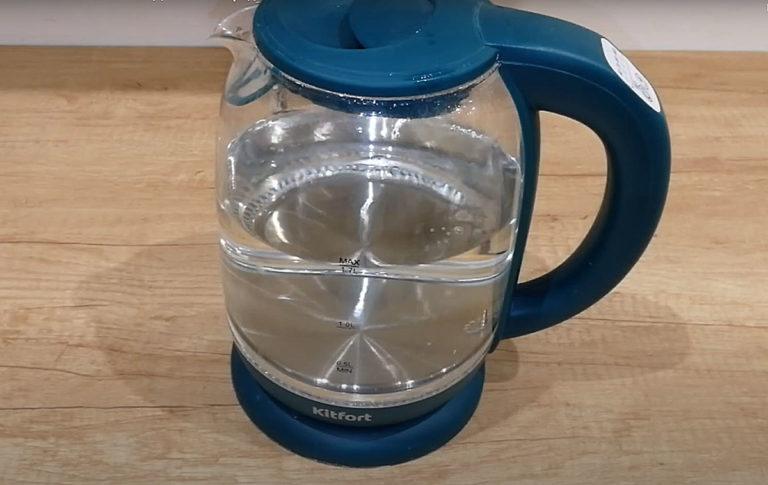
How to remove limescale using improvised means
The easiest and most affordable way to use ingredients that are in every kitchen.
Vinegar
With the help of vinegar, you can remove thick, stale scale, with which no other means can not cope. Be aware – the method is quite aggressive. It is not suitable for cleaning aluminum and copper.
You will need 0.5 liters of clean filtered water and 150-170 ml of 9% vinegar. Mix thoroughly, pour the remedy into the kettle and boil. After that, boil the normal water once again. Preliminarily open all the windows in the kitchen – the odor formed during the cleaning process is unpleasant and heavy, can cause headaches.
Let the kettle cool down a bit and rinse it with running water. Plaque residue will be easy to remove with a soft dishwashing sponge. Wipe it off with a towel, dry it well, and you’re good to go.
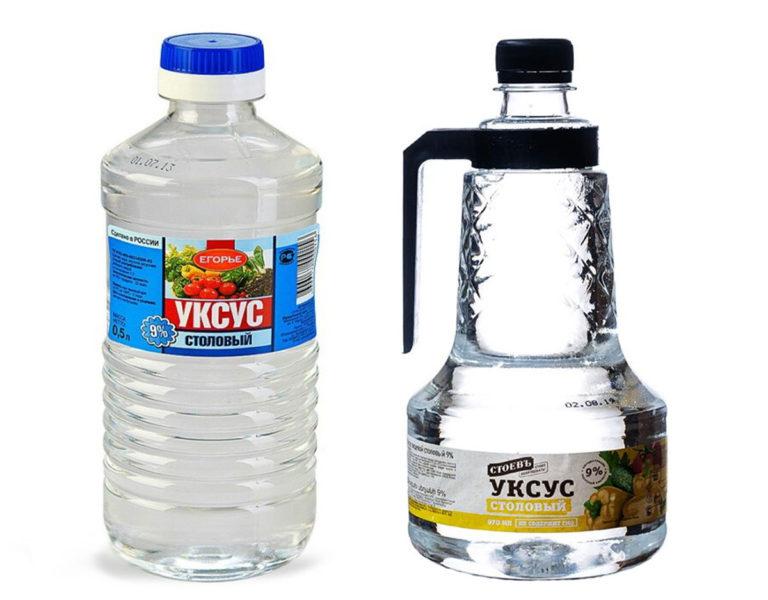
Soda
Soda is a very affordable and relatively gentle cleaning ingredient. It is suitable for both conventional kettles and electric kettles.
To remove limescale:
- Dissolve a teaspoon of baking soda in 500 ml of water. Stir the solution thoroughly.
- Pour it into the kettle and add another 500 ml of water. Stir and let the mixture stand for a few minutes.
- Bring the water and baking soda to a boil.
- Turn off the kettle and leave it with the solution for 1-2 hours.
- Bring the water to a boil again and let the mixture stand for a few hours.
- Pour out the water, rinse the kettle under running water and remove any remaining scum with a soft sponge.
- Fill with clean water and boil it again to get rid of the residue of the composition.
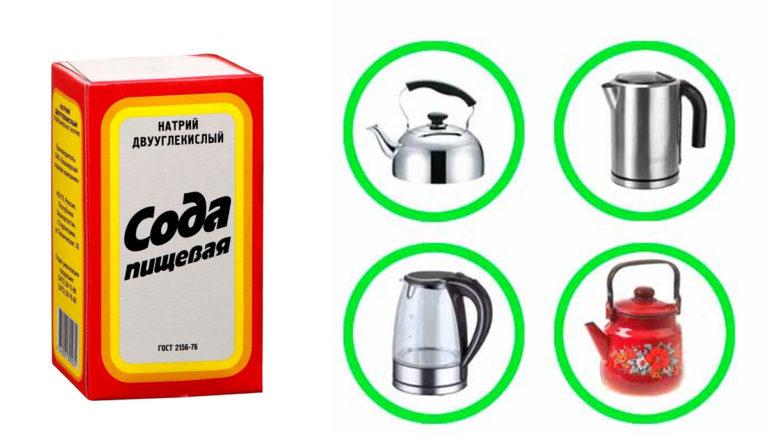
The method works well for enameled kettles.
Vinegar and baking soda
Vinegar in combination with baking soda is the most effective way to fight lime scale. Such a remedy will cope with the thickest layer.
Act according to the instructions, observing the proportions:
- Mix half a cup of 9% vinegar with 1 tablespoon of baking soda.
- Wait for the reaction to complete. The medium will hiss and bubble – this is normal.
- Add water so that it covers the walls of the kettle as much as possible, but does not spill out when boiling.
- Boil the mixture for half an hour.
- Pour out the water and rinse the kettle under running water.
Important! The method is not suitable for enameled or plastic kettles. The combination of vinegar and baking soda is very aggressive, the remedy can corrode the enamel.
Citric acid
One of the gentle ways to dissolve limescale in the kettle is to use citric acid. The method is suitable for electric kettles, enameled and metal dishes, glass.
The algorithm for removing scale is as follows:
- Pour 1-2 tablespoons of citric acid powder into the kettle.
- Pour 1 liter of clean drinking water.
- Boil the water.
- Leave the composition for 1-2 hours to complete the reaction.
- Pour out the water and remove any remaining scale with a soft sponge.
- If there is still limescale, repeat the procedure.
- Boil the kettle several times with clean water, rinse well and dry.
Caution! Boiling citric acid emits a caustic, sour odor, so open a window before cleaning.
Professional remedies
If you do not trust folk remedies for descaling, use one of the professional compositions.
- Antinakipin. Inexpensive and effective cleaner based on sulfamic acid, sodium citrate and ammonium chloride. Helps to get rid of scale in a short time. Very unpleasant odor.
- Topper 3031. Gentle and non-toxic descaler. Suitable for electric and enameled kettles.
- Filtero. Water-soluble tablets that can cope with any scale. They work very quickly and are portioned for 1 standard kettle.
- Sano Antikalk Kettle Descaler. A universal product that is suitable for cleaning all cookware and electrical appliances.
- Effective descaler for kettles
- Topper 3031 – a gentle and non-toxic product
- Filtero will quickly cope with any scale
- Universal dishwasher descaler.
When using this product, read the manufacturer’s instructions carefully.
Questionable methods of descaling
Not all methods are equally effective. On the expanse of the Internet you can find tips for removing scale in the kettle with questionable methods. In principle, they work, because they are based on the corroding of the scale with acid, but after their use there is either an odor or they stain the surface.
Carbonated drinks
Scale can dissolve sodas – Coca-Cola, Sprite, Fanta or their domestic analogs.
To get rid of the scale it is necessary:
- Open a can of soda and leave it for a few hours so that the gas comes out completely.
- Pour the liquid into the kettle, bring to a boil and boil a little.
- Pour out the soda and rinse the dishes with a soft sponge.
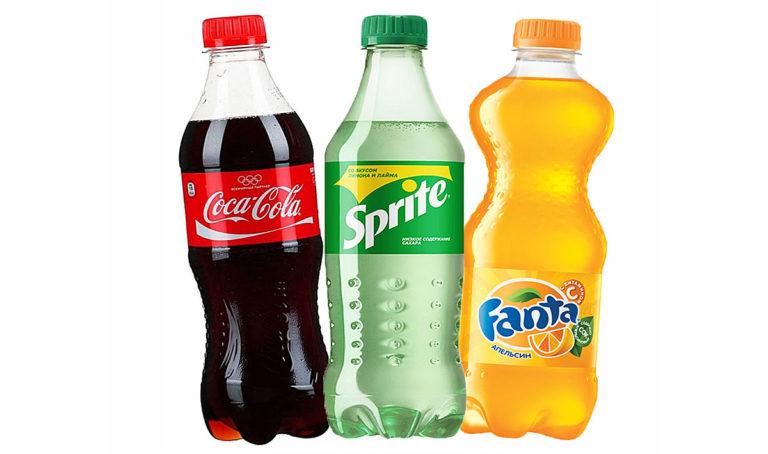
The method is really working, but it has disadvantages – dyes and odor. They get into the walls of the kettle, and you will long have to drink tea from a stained kettle with the smell of soda.
Brine
This method involves the use of cucumber brine. The method is suitable for aluminum kettles.
Instructions:
- Strain the brine and pour it into the kettle.
- Close the lid and boil the liquid.
- Wait 1-2 minutes, then turn off the kettle and leave it like this for a few hours.
- Drain the brine and remove the scale with a stiff sponge.
This method is not the most effective. Scale will have to be scrubbed off by yourself, in the process you can easily leave scratches on the surface. In addition, a large amount of unnecessary brine is not found in every home.
Cleaners
A low-efficiency method that involves the use of peels from fruits or vegetables. Descaling occurs due to the acids contained in the peels.
An example is this:
- Collect the peel from apples, tangerine or other citrus fruits.
- Wash it.
- Pour 500 ml of clean water over the peel.
- Boil it and let it infuse for a few hours.
- Pour out the water and clean the plaque with a sponge.
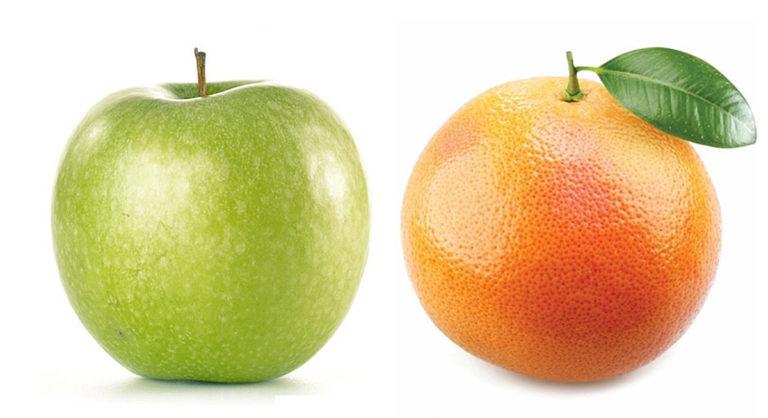
This method will not help to get rid of strong scale. The only advantage of the method is a pleasant smell and safety.
Prevention of limescale
To prevent limescale from appearing less often or not at all, follow preventive measures.
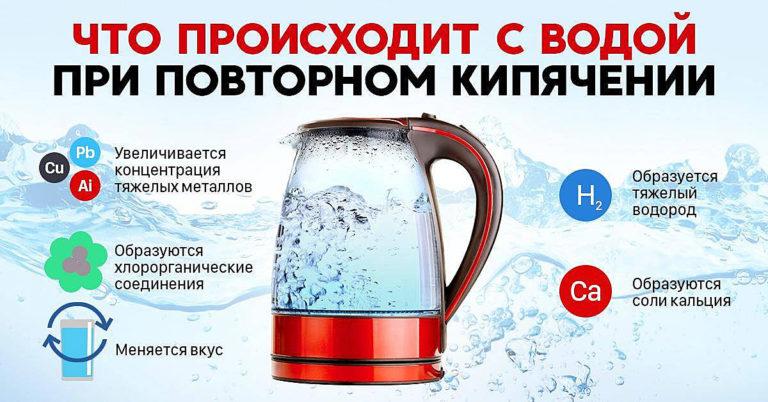
We recommend the following preventive measures:
- Use only clean bottled water or filtered tap water.
- Do not boil water more than once – drain the remaining liquid into the sink before re-boiling.
- Do not leave water in the kettle overnight.
- Clean scale regularly, while it can still be removed with a soft sponge or citric acid solution without using strong cleaning agents.
And if scale has appeared, you can easily remove it with the help of folk remedies or professional formulations.
In conclusion, a useful video about removing limescale in the kettle with home remedies.



